Brakes
-
ipg
-
mrs ratbox
-
ipg
-
mrs ratbox
-
FB Cruiser
- Posts: 149
- Joined: Thu Mar 15, 2007 10:40 am
- State: NOT ENTERED
- Location: Wonthaggi
brakes
G'day ipg, those brakes look like they would stop an elephant, the stub look good to, you must have cleaned them to an inch of there life. I always use High Temp greese for wheel bearings as it wount melt under using conditions. hope this helps PAT 
-
ipg
thanks pat
i cleaned the stubs and hubs up with thinners to make sure they were clean
then i went to repco and bought the highest rated grease they had which was rated up to 200 degrees
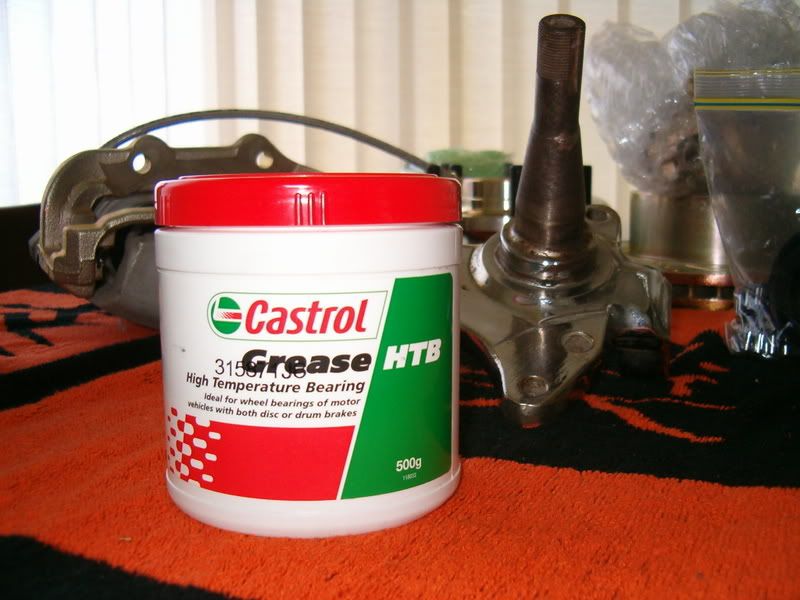
then i went to the chemist and bought an applicator
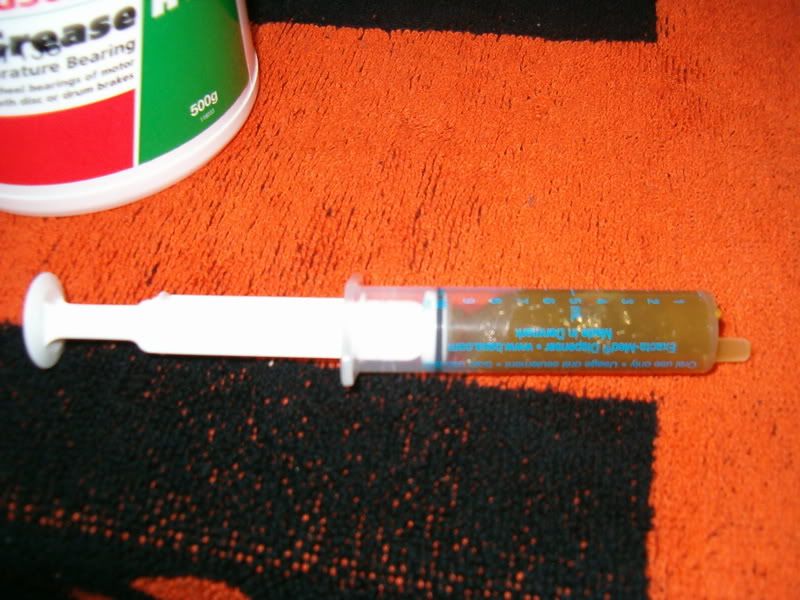
then i applied the grease to the top and bottom till its sqeezed out between the bearings
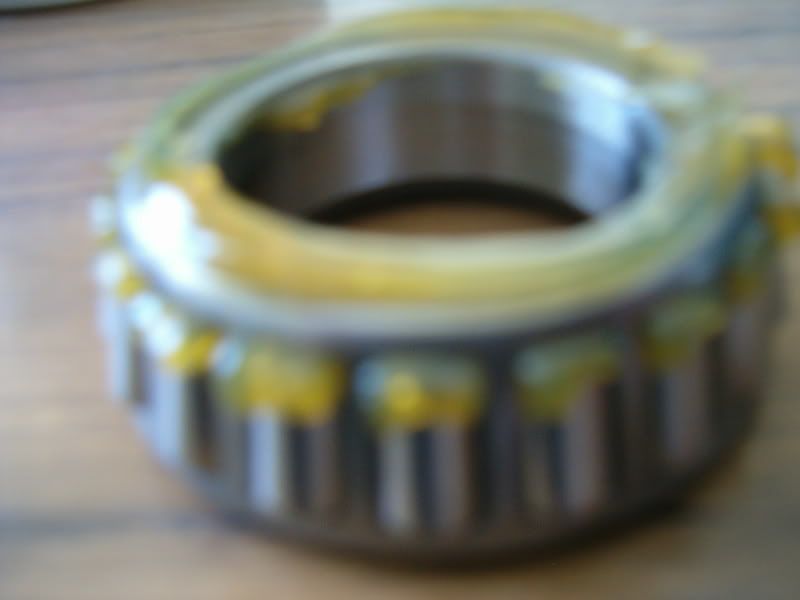
then i fitted the bearing facing the correct way for the hub and placed the dust cap over it and slide the hub onto the stub
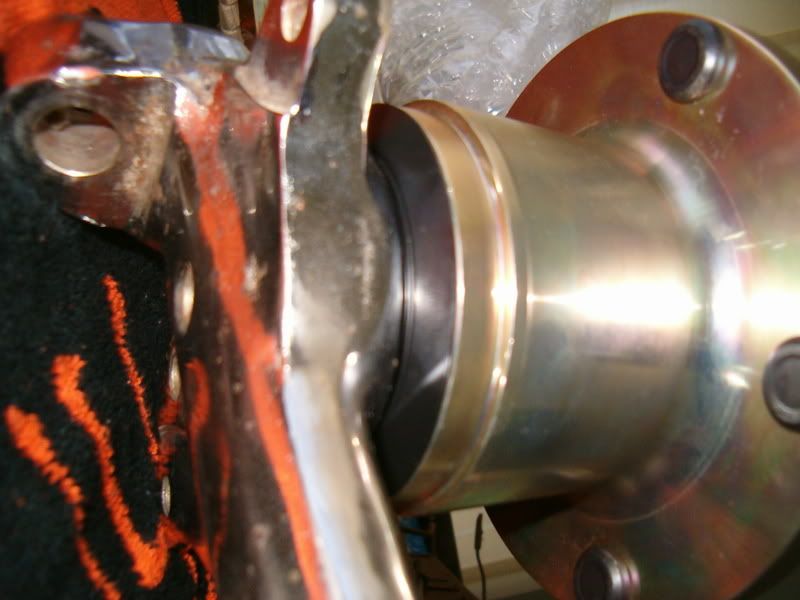
then did the same for the small bearing and fitted it to the stub
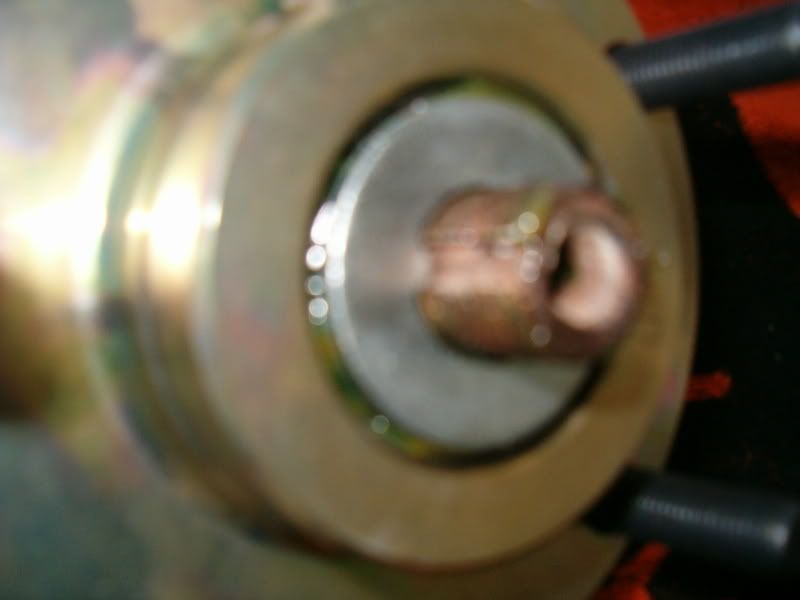
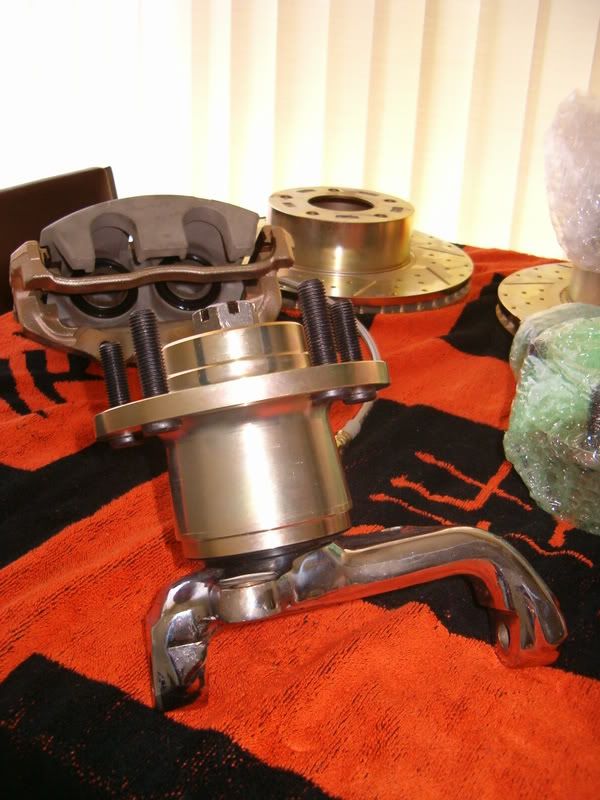
i cleaned the stubs and hubs up with thinners to make sure they were clean
then i went to repco and bought the highest rated grease they had which was rated up to 200 degrees

then i went to the chemist and bought an applicator

then i applied the grease to the top and bottom till its sqeezed out between the bearings

then i fitted the bearing facing the correct way for the hub and placed the dust cap over it and slide the hub onto the stub

then did the same for the small bearing and fitted it to the stub


Last edited by ipg on Tue Jan 01, 2008 5:42 pm, edited 2 times in total.
bearings
Hi jpg,
Those brakes are going to be massive - please don't hit them if I'm ever behind you and within 500 metres!
The grease you are using will be fine - you have big vented rotors and I'm sure that unless you plan to come down Conrod at 200 km/h and do a last second stand, you won't get them hot enough to have melt concerns.
I have standard HR rotors on mine and use the same grease - they get hot pretty quick towing the boat down long windy inclines but have not had grease melt problems - so relax.
There are a couple of things I'd like to forward to the group.
I was taught the "old way" of packing bearings - there are now new fangled devices which I'm sure others will throw up to read but the "old way" goes like this.
Make sure you wash and dry your hands thoroughly - absolutely!
Prepare everything in a dust free environment and keep any dirt/moisture away.
Never, Never, Never be tempted to "spin" a bearing dry - it will ruin it.
This applies to any ball or roller beaing........
To pack the bearing, place a great dollop of grease into the palm of you hand then "scrape" away the grease through the side gap between the inner cone and the cage - at the ends of the rollers.
Work your way around until grease appears as a solid stream between each roller.
Turn the bearing over and do likewise from the other side - apply a thin film to the bearing cone and fit in place.
Smear generously everything in the cavity but do NOT fill it with grease.
Repeat for the smaller outer bearing.
Fit the hub carefully and push the outer bearing against its cone.
Fit the retaining washer and nut then slowly turn the hub over as you SLOWLY tighten the nut using two fingers only...............
Do NOT tighten the nut up with a spanner.
When you have it finger tight, back off 1/2 turn whilst turning the hub over.
Then fit a 10" shifter to the nut so that it will "fall" down with the nut.
Slowly turn the hub again until the WEIGHT of the shifter stops - that is the setting. If you want, you can repeat this a few times.
Find the nearest hole for the split pin and fit - if it won't "Just" go into the next hole, back off - don't tighten! -there are usually two places the split pin will go through - one approx half a "flat" of the nut to the other.
I don't know if this is true, but I was told that with disc brakes, there has to be a little run-out to free the pads.
You will probably need to check them again after bedding in - but I have not found any difference in setting in the times I have done this.
When you have the wheel fitted, just do a check to see that you have the very slightest "rock" in the bearings - just barely something.
If there isn't any there, you may have them one "hole" too far up.
By the way, don't do as I did when I first packed a bearing and fill all the cavity space with grease - my caps kept popping off!
There should be a bit in there, but not a bucket full...............
I removed my backing plates to gain extra cooling when I originally fitted disks to the car - mistake - HR backing plates do two things - there is an inner metal seal which keeps fine nasties away from the dust/dirt rubber seal -
but more importantly the backing plate keeps any squeezed chassis grease from your ball joints from finding the rotor/pads...............
I had to fabricate new backing plates - which are now full circumference of the rotor - but I angled the outer inch "blue oval style" to get ventilation - they now work fine and keep relatively clean............
Hope some of this helps.
The new grease packing accessories I believe are much more user friendly - some of us just like to get "hands on"...............and have to do things the "old" way....................
frats,
Rosco
Those brakes are going to be massive - please don't hit them if I'm ever behind you and within 500 metres!
The grease you are using will be fine - you have big vented rotors and I'm sure that unless you plan to come down Conrod at 200 km/h and do a last second stand, you won't get them hot enough to have melt concerns.
I have standard HR rotors on mine and use the same grease - they get hot pretty quick towing the boat down long windy inclines but have not had grease melt problems - so relax.
There are a couple of things I'd like to forward to the group.
I was taught the "old way" of packing bearings - there are now new fangled devices which I'm sure others will throw up to read but the "old way" goes like this.
Make sure you wash and dry your hands thoroughly - absolutely!
Prepare everything in a dust free environment and keep any dirt/moisture away.
Never, Never, Never be tempted to "spin" a bearing dry - it will ruin it.
This applies to any ball or roller beaing........
To pack the bearing, place a great dollop of grease into the palm of you hand then "scrape" away the grease through the side gap between the inner cone and the cage - at the ends of the rollers.
Work your way around until grease appears as a solid stream between each roller.
Turn the bearing over and do likewise from the other side - apply a thin film to the bearing cone and fit in place.
Smear generously everything in the cavity but do NOT fill it with grease.
Repeat for the smaller outer bearing.
Fit the hub carefully and push the outer bearing against its cone.
Fit the retaining washer and nut then slowly turn the hub over as you SLOWLY tighten the nut using two fingers only...............
Do NOT tighten the nut up with a spanner.
When you have it finger tight, back off 1/2 turn whilst turning the hub over.
Then fit a 10" shifter to the nut so that it will "fall" down with the nut.
Slowly turn the hub again until the WEIGHT of the shifter stops - that is the setting. If you want, you can repeat this a few times.
Find the nearest hole for the split pin and fit - if it won't "Just" go into the next hole, back off - don't tighten! -there are usually two places the split pin will go through - one approx half a "flat" of the nut to the other.
I don't know if this is true, but I was told that with disc brakes, there has to be a little run-out to free the pads.
You will probably need to check them again after bedding in - but I have not found any difference in setting in the times I have done this.
When you have the wheel fitted, just do a check to see that you have the very slightest "rock" in the bearings - just barely something.
If there isn't any there, you may have them one "hole" too far up.
By the way, don't do as I did when I first packed a bearing and fill all the cavity space with grease - my caps kept popping off!
There should be a bit in there, but not a bucket full...............
I removed my backing plates to gain extra cooling when I originally fitted disks to the car - mistake - HR backing plates do two things - there is an inner metal seal which keeps fine nasties away from the dust/dirt rubber seal -
but more importantly the backing plate keeps any squeezed chassis grease from your ball joints from finding the rotor/pads...............
I had to fabricate new backing plates - which are now full circumference of the rotor - but I angled the outer inch "blue oval style" to get ventilation - they now work fine and keep relatively clean............
Hope some of this helps.
The new grease packing accessories I believe are much more user friendly - some of us just like to get "hands on"...............and have to do things the "old" way....................
frats,
Rosco
I'm with you Rosco, I do it the old way.
jpg give Hoppers Stoppers a call or email and find out what size rear slave cylinder will work with those big a$$ suckers!! They'll also be able to recommnend the Master/booster best suited to the task as I'm sure the old single tin lid system will far from cope


 .
.
jpg give Hoppers Stoppers a call or email and find out what size rear slave cylinder will work with those big a$$ suckers!! They'll also be able to recommnend the Master/booster best suited to the task as I'm sure the old single tin lid system will far from cope
Speed and Style........... One day I'll get the speed bit.
-
ipg
thanks rosco,
i previously did bearings on my old vk with a hot 6 in it and your advice is spot on.
i used the syringe becuase it had the perfect sized tip to get in between the bearing casing.
the pic i took of the bearing is when it is only half done so i could show how it oozes out between the bearing and casing.
not sure what im doing for a booster and master cylinder yet devildrod. i got a vn ss boost with 1 inch master but the booster is 9" diameter which means it will interfere with the bonnet hinges.
will probably end up using a vt master cylinder now and a 7" booster off a chev or somethin somethin...
rear end is standard vl turbo spec atm so it should work
i previously did bearings on my old vk with a hot 6 in it and your advice is spot on.
i used the syringe becuase it had the perfect sized tip to get in between the bearing casing.
the pic i took of the bearing is when it is only half done so i could show how it oozes out between the bearing and casing.
not sure what im doing for a booster and master cylinder yet devildrod. i got a vn ss boost with 1 inch master but the booster is 9" diameter which means it will interfere with the bonnet hinges.
will probably end up using a vt master cylinder now and a 7" booster off a chev or somethin somethin...
rear end is standard vl turbo spec atm so it should work
-
ipg
ok so im playing with booster master cylinder ideas
a 1 inch master is recommended with these brakes as that what was fitted to VTs at the factory.
the advantage of using the VT master over older ones off vl turbo/vn ss commodores, even though they both have 1 inch bores is that they have shorter pedal travel
a 1 inch master is recommended with these brakes as that what was fitted to VTs at the factory.
the advantage of using the VT master over older ones off vl turbo/vn ss commodores, even though they both have 1 inch bores is that they have shorter pedal travel
-
ipg
